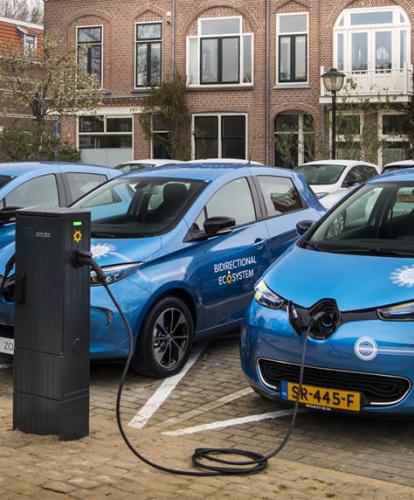Renault has started a large-scale vehicle-to-grid (V2G) charging pilot, the first of its kind in the world, with schemes beginning in Portugal and the Netherlands.
Using a fleet of 15 Renault Zoes, pilot schemes are starting in Utrecht and Madeira, with more to follow in Denmark, France, Germany, Sweden, and Switzerland.
Because the Zoe charges on AC only, the reversible charger is able to be placed inside the vehicles, which reduces the changes needed to charging infrastructure to allow V2G to work.
The pilots will allow plugged-in cars to act as portable energy storage devices, charging when demand on the grid is low, but discharging during peak demand to support the network.
The system is particularly useful when run alongside renewable energy generation from the likes of wind or solar power, which see peaks and troughs due to changing weather conditions and times of day.
The pilots are designed to measure how well V2G works in large-scale operations, and discover the technical and economic advantages of having much of the V2G componentry fitted in the vehicle, rather than the charge point.
It also aims to demonstrate the benefits of reduced infrastructure costs and renewable energy support to local and national electricity grid operators. Common standards to roll-out these systems, and regulatory frameworks for mobile-energy storage are expected to be worked out too.
Gilles Normand, Groupe Renault’s director of electric vehicles, said: “With this initiative, Groupe Renault is fully fulfilling its role as a leader in electric mobility for all and as a player in the energy transition.
“Vehicle-to-grid charging is a key pillar of the smart electric ecosystems that Groupe Renault has set up. We have chosen onboard technology that also optimizes the cost of recharging stations and thus facilitate a large-scale development.”



